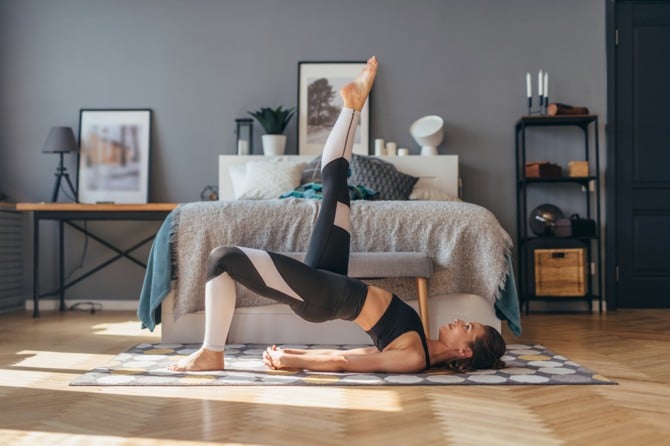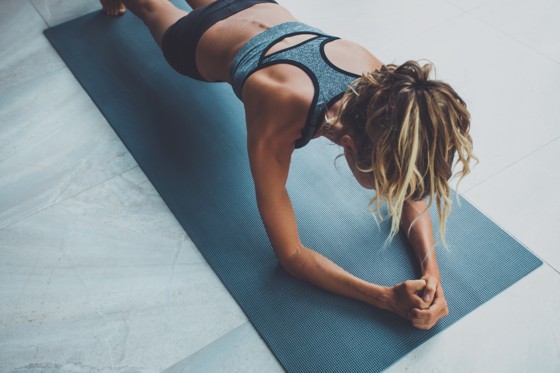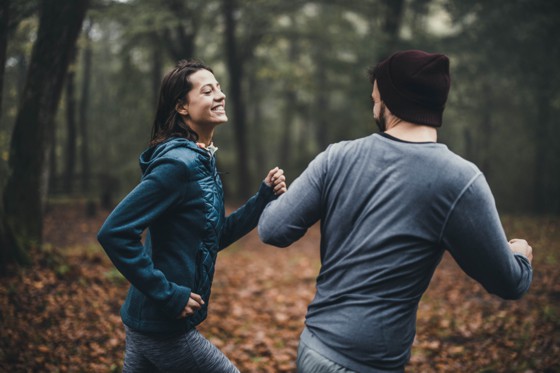Exercises to Relieve Lower Back Pain
Back exercises for the home & office: Relaxing and strengthening exercises for the back

Man is not born to sit - yet we spend most of our time sitting. The back tells us a lot about our habits. Tension and weak muscles often lead to back pain. In this article, we will show you which back exercises you can use in the office and at home to strengthen your torso and release tension.
- Briefly explained: Back pain from sitting
- Why does sitting cause back pain?
- 5 tips to prevent back pain
- Quick exercises to added back strength
- 5 Sports that promote a strong and flexibel back
Briefly explained: Back pain from sitting
Why does sitting cause back pain?

When eating, driving, in the office or in front of the tele - too often we find ourselves in a position that is actually unsuitable for our body. When sitting, the intervertebral discs are exposed to much greater pressure than when standing. Standing puts 100% of pressure on the discs, sitting 140% and when bent forward (as is often the case at a desk) it moves up to 200%.
Other causes of tension and back pain from sitting are
5 tips to prevent back pain
To stop back pain from creeping up again, consider the following five tips:
Tip #1: Stay Active
Throughout the day, there's always the opportunity to be more active: Take the stairs instead of the elevator, get off one stop earlier, stand in the train instead of sitting, bike to work, etc.
Tip #2: Set up your desk correctly
An ergonomic workplace is essential to avoid back pain from sitting. Be sure to adjust the chair and desk height to be ergonomically friendly. You can learn how to properly adjust your workspace from the Mayo Clinic.
Tip #3: Move around at work
At work, you should get up and walk around for at least 5 minutes every hour. Walk through the office building (stairs are also welcome), hold a meeting standing up or do some stretches at your desk.

Tip #4: Change it up
Don't be mistaken! Don't spend hours on end in the perfect sitting poistion. It's much more important that you change your sitting position regularly. Anything is allowed as long as you don't stay too long: kneeling on the chair, one leg crossed over the other or standing at your desk.
Tip #5: Train your back
Having the best sitting posture mixed with standing is not enough if you spend most of the day sitting. It is nevertheless important that you regularly strengthen and stretch your torso muscles. We'll show you back exercises for the home and office.

If you take these five tips to heart, nothing stands in the way of a pain-free back. If you still suffer from frequent back pain, consult a doctor. Back pain is not always caused by poor posture when sitting. Congenital malpositions or injuries can also be the cause of back pain and must be treated medically.
Quick back exercises
For a pain-free back, just a few minutes a day can be the difference between pain and pain free.
Back exercises at home
As you already know, too much sitting weakens and shrinks muscles. Therefore, it is that much more important that you get up, exercise and regularly stretch.
In the following video, the Fitness Blender programme shows you which back exercises you can do at home to strengthen your back:
- without any equipment
- with little space
- in just 8 minutes.
In this video, you can learn and practice important back exercises to help stave of back pain:
Each exercise takes 50 seconds.
Exercise #1: Pilates Breaststroke
Lay face down on the ground. Stretch your arms out forwards and sweep the arms across your body until your hands reach your thighs. Bring the hands up again to repeat the movement.
Important: Be sure to keep your lower back arched.
Exercise 2#: Pilates Swimmers
Law face down on the ground, as in the first exercise, with your arms stretched out forwards. Now raise your right arm and left leg, then lower them. Now alternate by raising your left arm and right leg. Repeat for the duration.
Exercise 3: Windmill Toe Touches
Stand up straight and then bend the hips so that your chest is parallel to the ground with both legs and back straight. With arms spread and straight, rotate your upper body so that the right hand touches your right toe and left hand touches your left toe. Important: If your lower back starts to hurt at any moment, be sure to stop the exercise.
Exercise #4: Straight leg deadlifts
Assume a standing position. With legs bent very slightly, reach forwards and down with your upper body bent at the hips. With the back straight, reach and touch the ground and then come back up. Repeat for the duration.
Exercise #5: Rotational Toe Touches
Assume the starting position in exercise #4. This is a deadlift with rotation. Instead of reaching with both arms to the ground. You want to touch your left hand with the right toe and the right hand with the left toe. Be sure to slightly bend the knees.
Exercise #6: Back Bows
Lay face down on the ground. Stretch your arms out forwards. Now lift your shoulders, knees and legs off the ground and back down. Repeat for the duration. Exhale as your squeeze up. Inhale as you drop down.
Important: Try to feel a squeeze in your lower back. This signals that your lower back is engaging in the exercise.
Exercise #7: Bird Dogs
Start on your knees with both palms on the ground under your shoulders. Reach forwards with your left arm while your right leg extends backwards. Then switch so that the right arm reaches forwards and the left leg extends backwards.
Exercise #8: Cool down via the little cobra
Lay flat on your stomach. Prop yourself up with your hands on the ground. Arch your back and push your upper body upwards. Legs should be flat on the ground.
To help stretch your back and release tension, we recommend a yoga session with Adriene:
Back exercises for the office
To help you relax or relieve tension in the shoulder and neck, we recommend the following video by Adriene:
You can easily do these exercises sitting in your office chair or on the floor. Hold these poses for about 30 seconds while you breathe in and out deeply, maintaining an upright position.
In the video, you can see the following exercises:
- Neck stretches
- Shoulder stretches
- wrists stretches
Tip: Once you've practiced the exercises in the video enough, take screenshots of the list and try the movements out in the office without the video.
5 sports for a strong and healthy back

In order to maintain a strong and healthy back, it's important to find a sport that you enjoy. The following sports are especially great for your back:
Rock climbing
Climbing, almost better than any other sport, trains the back. The movements typical to climbing also release tension and mobilise your joints and muscles. Climbing courses can be found in most cities.
Calisthenics
In calisthenics you train with your own body weight - either at home or in a park.
Swimming
Swimming is not only easy on the joints, but also strengthens the back and arm muscles. We recommend taking a course to get the basics as the wrong technique can lead to injury. Freestyle and backstroke are good places to begin.
Dancing
Dancing is fun, helps reduce stress and keeps you moving. It also trains your posture and muscles and is easy on the joints.
Jogging
Running trains the deep lower back muscles. Be sure to wear a good pair of running shoes that cushion the joints and practice good running posture. In our article „Running for Beginners“ we give you pointers on how to start running as a beginner. If you like the sport, be sure to visit our Online Shop and try designing your own running jersey yourself.

Women's Winter Running Jersey RLW5w Pro

Men's R5 Running Jersey

Women's RT5w Running Vest Pro
Yoga
Yoga offers many different levels of difficulty, so that even beginners can get a foot on the ground. The so-called asanas series trains strength and flexibility. Yoga classes are offered in most cities and can be viewed free of charge on YouTube.
We hope you find a sport that you enjoy and that can strengthen your lower back. If you are looking for motiviation, take a look at our Magazin. We report on a variety of sports, tips how to follow a healthy diet and athletes who share their success stories.
Picture credits: Title image: PeopleImages/iStock, Image 1: alvarez/iStock, Image 2: Jasmina007/iStock, Image 3: skynesher/iStock.